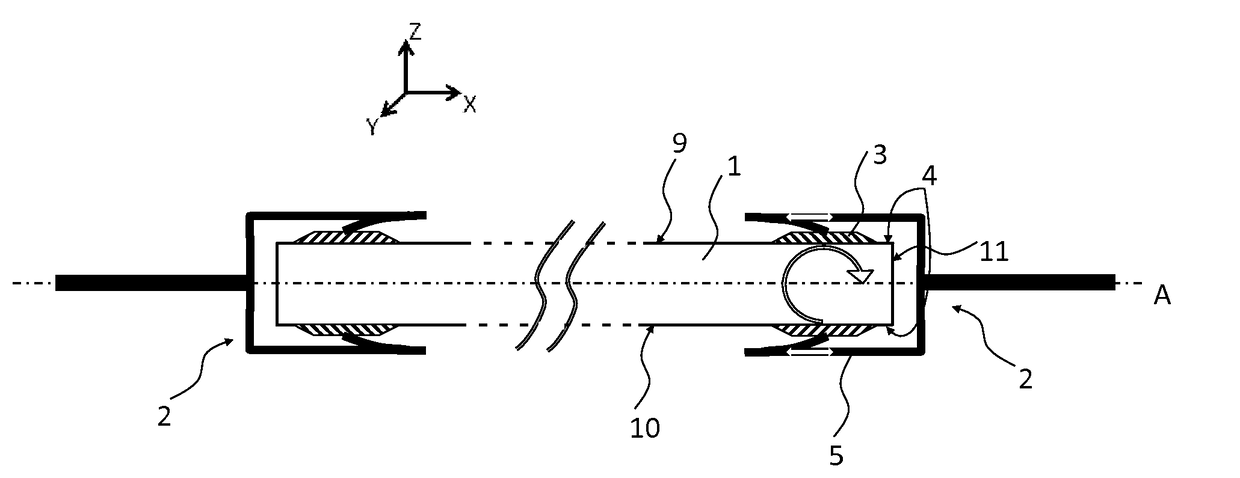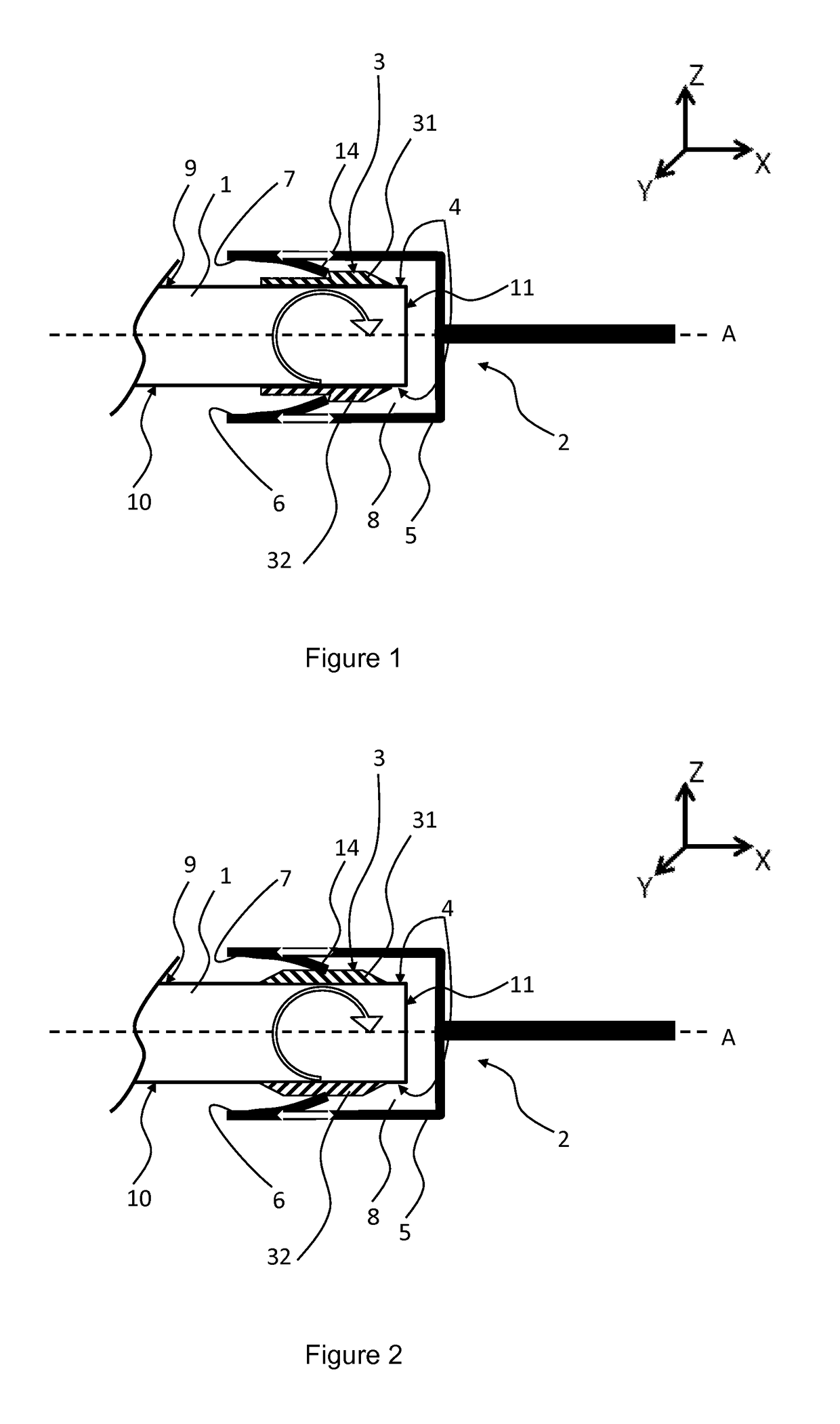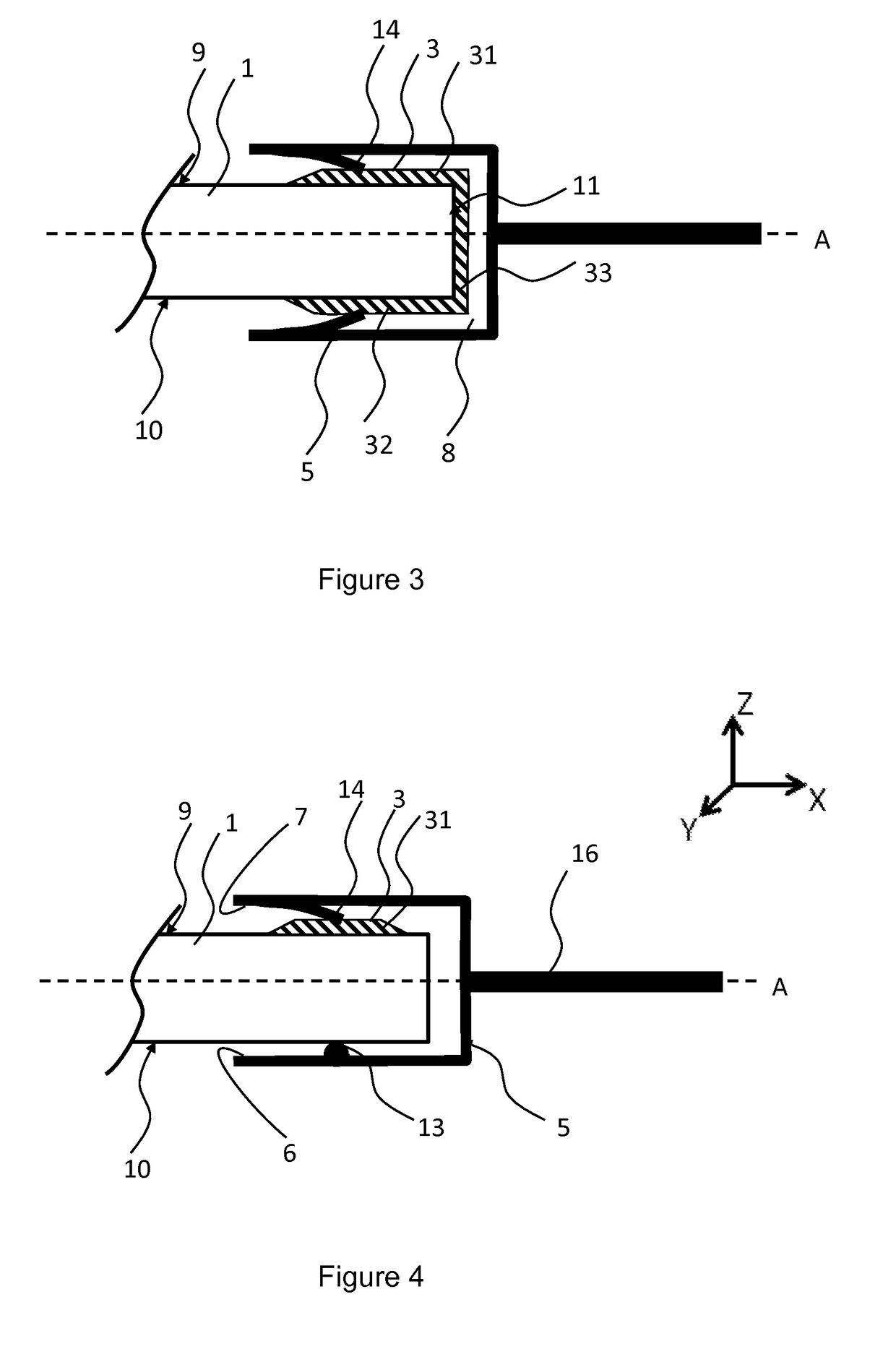Panel and associated attachment devices
a technology of attachment devices and panels, which is applied in the direction of photovoltaics, heat collector mounting/support, moving/orienting solar heat collectors, etc., can solve the problems of degrading the reliability of the holding of modules, imposing extra costs of more than 10%, and affecting the installation of metal frames
- Summary
- Abstract
- Description
- Claims
- Application Information
AI Technical Summary
Benefits of technology
Problems solved by technology
Method used
Image
Examples
first embodiment
[0065] presented in FIG. 1, the lug 3 consists of two parts 31, 32, respectively bonded to a peripheral part of the two main faces 9, 10 of the panel 1. The lug 3 consists of a metal material and is bonded to the panel 1 by means of an adhesive substance affording strong adhesion between metal / glass or metal / polymer surfaces, chosen from silicone, epoxy or polyurethane glues.
[0066]By way of example, the dimensions of each of the parts 31, 32 of the lug 3 consist of:
[0067]a length (along the axis Y shown schematically in FIG. 1) lying between 50 and 100 mm, advantageously equal to 80 mm;
[0068]a width (along the axis X shown schematically in FIG. 1) by between 10 and 20 mm, advantageously equal to 15 mm;
[0069]a thickness (along the axis Z shown schematically in FIG. 1) lying between 2 and 4 mm, advantageously equal to 3 mm.
[0070]Each part of the lug 3 comprises a shoulder of around 0.1 to 0.5 mm, shown schematically in FIG. 1, which will make it possible to lock the clip 5 after it is...
second embodiment
[0079]According to this second embodiment of this disclosure, the clip 5 encloses the two parts 31, 32 of the lug 3 and a peripheral part of the panel 1. The panel 1 nevertheless has degrees of freedom of movement: in pivoting firstly, as shown schematically by the arrow in an arc of a circle in FIG. 2. This movement makes it possible to accompany the flexing of the panel 1 and avoids creating a stress concentration point by flat contact of the panel 1 on the walls 6, 7 of the clip 5. Pivoting is possible because of a sufficient free space, provided in the coupling space 8, and the flexible character of the tongues 14. The spacing between each wall 6, 7 of the clip 5 and the part 31, 32 of the lug 3 facing is around 2 to 3 mm.
[0080]Moreover, the panel 1 has a degree of freedom of movement in translation, along the coupling axis A, as illustrated by the two white arrows in FIG. 2. The amplitude of this translation movement is nevertheless limited. This is because it is blocked in the...
third embodiment
[0086]FIG. 5 presents a third embodiment according to this disclosure. The lug 3, bonded on the peripheral surface of the panel 1, comprises three parts 31, 32, 33 forming a U-shaped bracket. It further comprises an offset part 12 having two opposite free faces U, V to which the clip 5 is attached. The attachment is done by means of tongues clamped on these two faces or locked by shoulders present on these two faces. In this case, the clip 5 grips only the offset part 12 of the lug 3, and not the peripheral part of the panel 1. The offset part 12 of the lug 3 has degrees of freedom of movement in pivoting and translation (limited) as shown by the white arrows in FIG. 5. This makes it possible to accompany the movement of the panel 1 during flexing under weight load.
PUM
 Login to View More
Login to View More Abstract
Description
Claims
Application Information
 Login to View More
Login to View More - R&D
- Intellectual Property
- Life Sciences
- Materials
- Tech Scout
- Unparalleled Data Quality
- Higher Quality Content
- 60% Fewer Hallucinations
Browse by: Latest US Patents, China's latest patents, Technical Efficacy Thesaurus, Application Domain, Technology Topic, Popular Technical Reports.
© 2025 PatSnap. All rights reserved.Legal|Privacy policy|Modern Slavery Act Transparency Statement|Sitemap|About US| Contact US: help@patsnap.com



